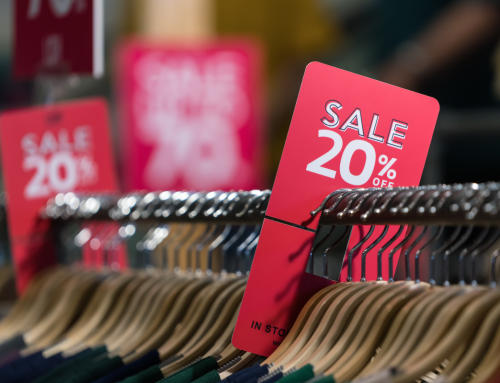Knowing how to target your ad campaigns is crucial. Indeed, good targeting enables you to:
- Maximize the effectiveness of your campaigns
- Increase your chances of conversion and, therefore, of revenue
- Save on costs since you won’t be posting your ads to a non-relevant audience
- Optimize the overall results of your company
These days, technology has a variety of targeting possibilities to offer. But how do you choose the best method? Scroll down for a description of the advantages and disadvantages of 4 different targeting methods.
Targeting by age and gender
Targeting by age and gender is certainly one of the most long standing methods that’s still in use today. While demographic data about customers allows us to personalize ads, this method also has several disadvantages.
Advantages
- Relevance of the message: When you target by age and gender, you can adapt your ad message so that it’s as relevant and attractive as possible for your target audience.
- Maximize impact: By identifying the age groups and gender that are typically interested in your product or service, you can concentrate your ad efforts on these specific segments.
- Better return on investment (ROI): By targeting your ad campaign in a more precise way, you can increase your chances of generating conversions and sales.
Disadvantages
- Risk of generalization: When you only target by age and gender, you run the risk of generalizing. People can have varied preferences, interests and behaviours that don’t necessarily correspond to the characteristics traditionally associated with their gender or age bracket. For example, not all women of a certain age will be interested in your product even if they make up the majority of your clients.
- Excludes other relevant segments: When you only concentrate on age and gender, you may neglect other important factors such as interests, values, shopping behaviours, etc. that can be more relevant for reaching your target audience. Limiting your targeting to these variables alone can exclude other consumer segments that might be interested in your product of service.
- Data privacy and protection: Targeting based on age and gender requires specific demographic data about users, and this can create complications when it comes to data privacy and protection.
Navigation-based targeting
Navigation-based targeting is a method frequently used by companies like Google or Facebook. This method allows you to show your ads to people who have shown an interest in your products, or products similar to yours, by interacting with online content.
Advantages
- Greater relevance: By analyzing the navigation habits of users, you can better understand their interests and preferences. This allows you to post ads that better correspond to their needs, which then increased the relevance of your ad.
- Improved effectiveness: By targeting specific users according to their navigation behaviour, you can maximize the effectiveness of your ad campaign and increase your chances of conversion.
- Personalization: By making use of user navigation information, you can better personalize your ads and make them more attractive.
Disadvantages
- Confidentiality concerns: Navigation-based targeting gives rise to confidentiality questions. Users may be concerned about the monitoring of their online activity and the storage of their personal data.
- Misunderstandings: Even though navigation behaviour can help you understand user interests, it can also lead to misunderstandings. Algorithms don’t always fully understand user motivations and preferences.
- Technical limitations: Navigation-based targeting depends on online monitoring and targeting technologies. Some people use ad blockers or data protection tools that can limit the effectiveness of this kind of targeting.
Targeting based on previous purchases
Targeting an ad campaign based on previous purchases is a common approach used by many companies to maximize the effectiveness of their marketing campaigns. This approach, however, can sometimes end up being costly as it requires multiple steps including collecting and analyzing data, segmenting the clientele, and personalizing messaging and offers.
Advantages
- Greater personalization: By using data from previous purchases, you can personalize ads according to customers’ individual preferences. This can increase the chances of attracting their attention and getting them to buy again.
- Direct response: By targeting customers according to their previous purchases, you can concentrate on products or services that most interest them. Since ads are therefore more relevant for consumers, this can stimulate a direct response and increase the conversion rate.
- Builds customer loyalty: By showing customers ads for complementary products or services to ones they’ve already bought, you can encourage them to remain loyal to your brand.
Disadvantages
- Privacy: The use of data regarding previous purchases can give rise to concerns about customer privacy. Some people might not be comfortable with their purchasing information being used for advertising.
- Rigidity: When you only consider previous purchases when targeting an ad campaign, you risk limiting the possibility of reaching new market segments. Consumers may also end up being exposed to repeated ads that don’t fit their current interests.
- Errors of judgement: Although data about previous purchases may provide useful information, it’s not always a precise indicator of customers’ preferences and future needs.
Location-based targeting
Location-based targeting is a marketing strategy that involves concentrating marketing efforts on one specific geographic location. With this approach, you can personalize your messages and offers according to consumers’ location and thereby maximize campaigns’ relevance and effectiveness.
Advantages
- Greater relevance: By targeting users according to their location, you can be certain that your ad is more relevant for them.
- Better conversion: When ads are targeted geographically, they tend to generate a higher rate of conversion. Users are more likely to take action, such as buying a product or visiting a physical store, if these are nearby.
- Cost effectiveness: By targeting your ad campaign on specific geographic areas, you can save money by not posting ads to a broader and less relevant audience.
Disadvantages
- Audience limitation: When you only concentrate on one specific location, you risk limiting your potential audience. If your product or service might interest people outside this area, and if they’d be prepared to make the trip, you risk missing out on opportunities.
- Technological challenges: Putting in place a geolocalized ad campaign can require specific technological tools to collect and analyze the user location data. It’s important to have the necessary resources and expertise to correctly implement this approach.
- User mobility: When implementing your strategy, you’ll need to take into account the fact that users move around and access the internet both at work and at home. For example, if a person is localized at work in the city and your store is located in the suburbs, your ad won’t be shown to this person, even though your store is situated close to the user’s home.
Targeting with allsales.ca
Along with offering location-based targeting, allsales.ca offers multiple targeting options based on user navigation.
We can help you target according to:
- Categories: For example, we can target people who have visited ads from the “Clothing and Accessories” category.
- Sales type: For example, we can target users who have visited the “Online Deals” sale type.
- A combination of categories and types of sales: For example, we can target people who have visited ads from the “Clothing and Accessories” and “Online Deals” OR “House and Garden” and “Warehouse and Sample Sales.”
- A specific advertiser: It’s possible to target users who have clicked on ads from a specific advertiser.
- One or more specific ads: It’s also possible to target people who have visited one or more specific ads.
Our experience has shown that the most effective targeting is a combination of these two methods. Indeed, by targeting users according to their navigation history + their location, our targeted mailings have an open rate of 45%!






Social Contact